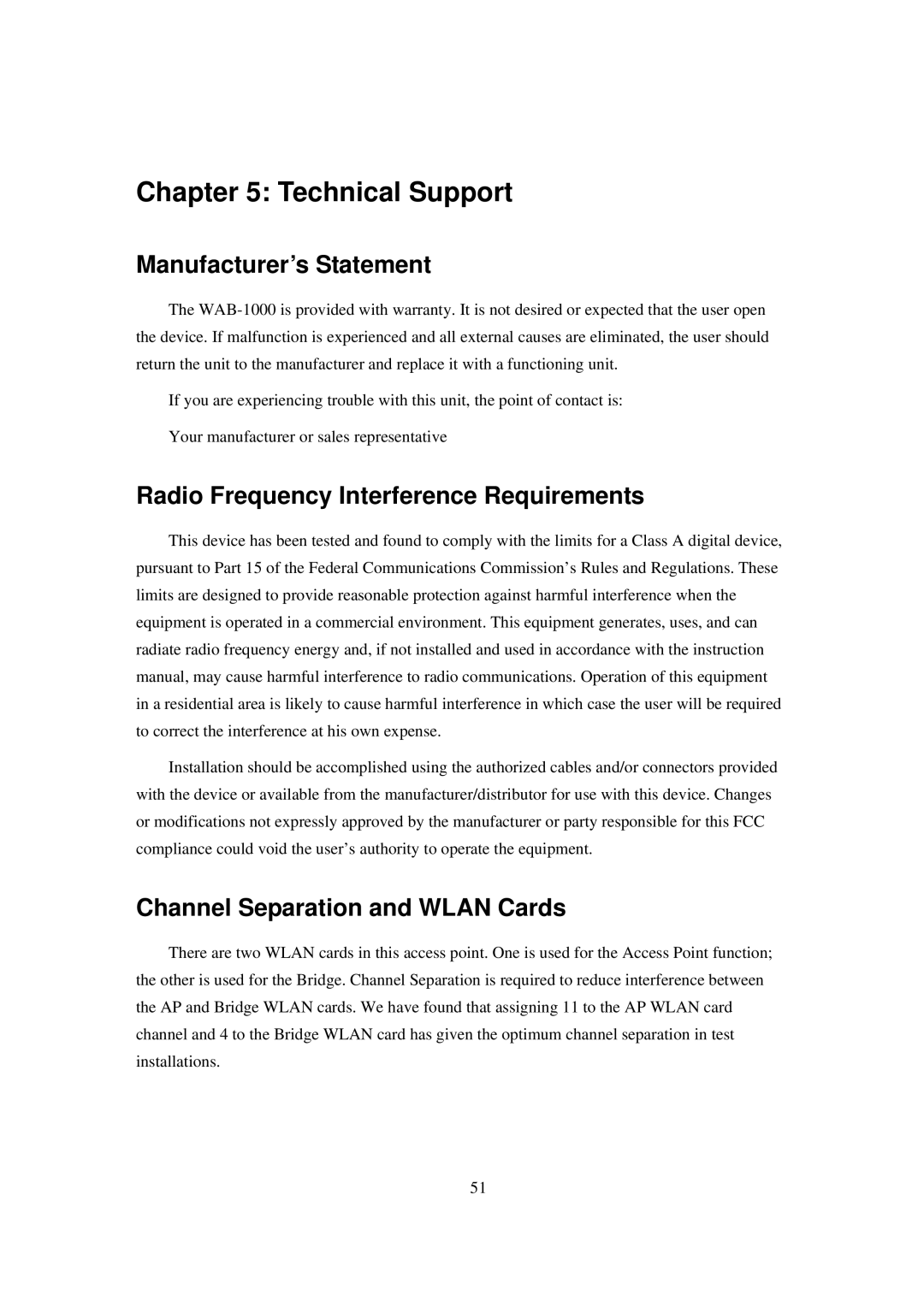Chapter 5: Technical Support
Manufacturer’s Statement
The
If you are experiencing trouble with this unit, the point of contact is:
Your manufacturer or sales representative
Radio Frequency Interference Requirements
This device has been tested and found to comply with the limits for a Class A digital device, pursuant to Part 15 of the Federal Communications Commission’s Rules and Regulations. These limits are designed to provide reasonable protection against harmful interference when the equipment is operated in a commercial environment. This equipment generates, uses, and can radiate radio frequency energy and, if not installed and used in accordance with the instruction manual, may cause harmful interference to radio communications. Operation of this equipment in a residential area is likely to cause harmful interference in which case the user will be required to correct the interference at his own expense.
Installation should be accomplished using the authorized cables and/or connectors provided with the device or available from the manufacturer/distributor for use with this device. Changes or modifications not expressly approved by the manufacturer or party responsible for this FCC compliance could void the user’s authority to operate the equipment.
Channel Separation and WLAN Cards
There are two WLAN cards in this access point. One is used for the Access Point function; the other is used for the Bridge. Channel Separation is required to reduce interference between the AP and Bridge WLAN cards. We have found that assigning 11 to the AP WLAN card channel and 4 to the Bridge WLAN card has given the optimum channel separation in test installations.
51
